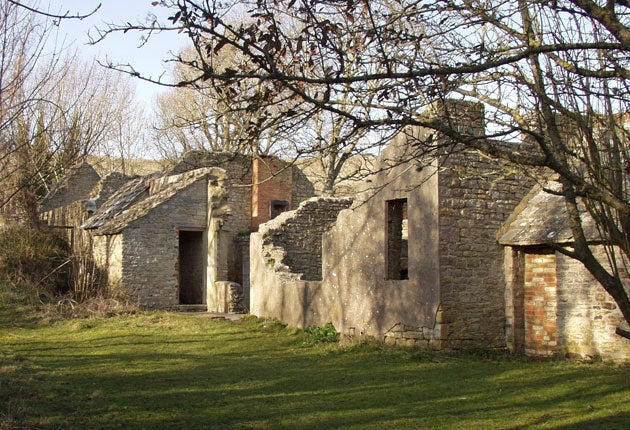Lingering ghosts of a long-dead England
Tyneham in Dorset was already a museum piece when it was shut down during the Second World War. It never reopened

There'll be another burial in the village next week. Arthur Grant's ashes will be interred in the churchyard at Tyneham in Dorset. He left more than 60 years ago, but now the last of him will return to the village that laid down its life for the Second World War.
In 1943, the army needed Tyneham to expand its Lulworth firing range, and so everyone was shipped out. Ever since, the only way of becoming a resident again is to die and be buried here. Arthur is believed to be the last of them. Now there is no one with any memory of this curious place which did not wither or change but simply shut its doors and went away.
Even for the time, Tyneham was a period piece, albeit an ambiguous one. For romantics, it was, in its old ways, a keepsake of a once-unchanging England. For modernists, it was, with its broken roadways, its single telephone, and the Bond family owning all the land, an affront to progress.
But, to a few hundred people, it was home. In the early decades of the 20th century, there was Mrs Manktelow, the widow at Double Cottages, the schoolmistress Mrs Pritchard, old Charlie Miller, the Knights, including Fred and his father, coachman to the Bonds at Tyneham House; Charlie Meech, the odd-job man up at the big house; and Mrs Taylor, the village wise woman.
There were two villages here, really. Down the Gwyle, the coombe that led to the sea, was Worbarrow. Then there was Tyneham proper, with its fields of sheep and its Elizabethan manor house. Closer to the green was St Mary's church; the rectory, home to parsons grand enough to make use of the tennis courts; Dorset stone homes; the one-roomed school; and The Row, the line of terraced cottages punctuated by the village's only shop.
By the late 1930s, there were cracks in its chocolate-box façade. The school had closed in 1932. There was no pub; Worbarrow's coastguard station had closed; there was no electricity, no piped water and no development – unless the Bonds sanctioned it.
Then came the war. A radar station was set up on Tyneham Cap, and, to staff it, the Women's Auxiliary Air Force arrived. They requisitioned Tyneham House, and airmen were billeted in homes. In November 1943, every villager received a letter. "It is necessary," it began, "to move you from your homes." By 19 December, all 225 were gone. Many were under the impression they would return, but in 1947 they were told there would be no coming back. Compensation was paid in 1952 and periodic campaigns were mounted to wrest back the village.
They failed, but concessions were made. In 1975, burials were allowed, and the army's guns are muzzled on 134 days a year so ramblers and curious civilians can once again come to Tyneham. The manor house was demolished in 1967, and thatched roofs have fallen. But the church is preserved, and the school is a museum. In it are the clothes pegs of pupils, and one bears the name Arthur Grant. His ashes will be in the churchyard, but the memory of him, and some of the spirit of the place he once inhabited, lives on.
Subscribe to Independent Premium to bookmark this article
Want to bookmark your favourite articles and stories to read or reference later? Start your Independent Premium subscription today.

Join our commenting forum
Join thought-provoking conversations, follow other Independent readers and see their replies